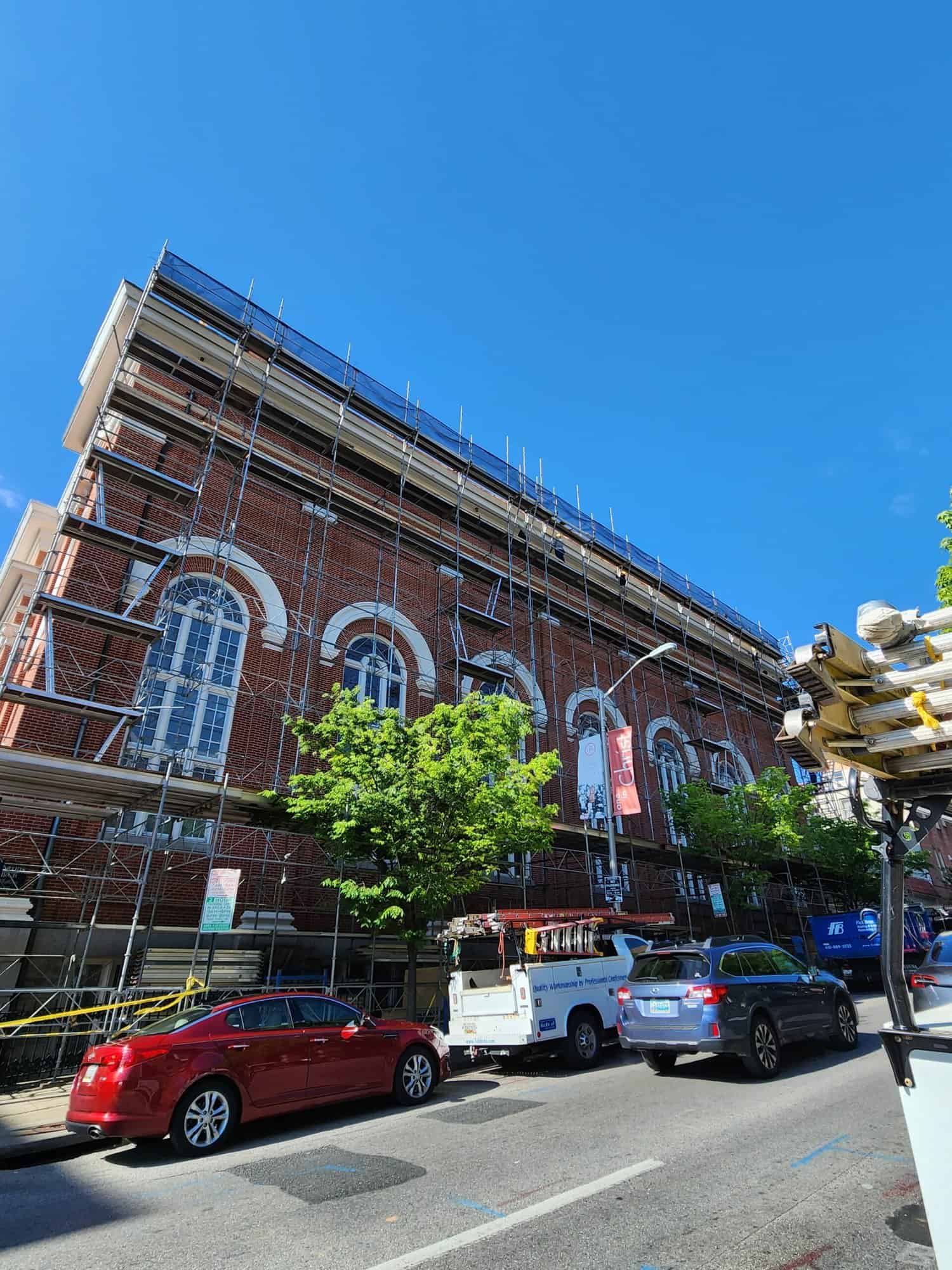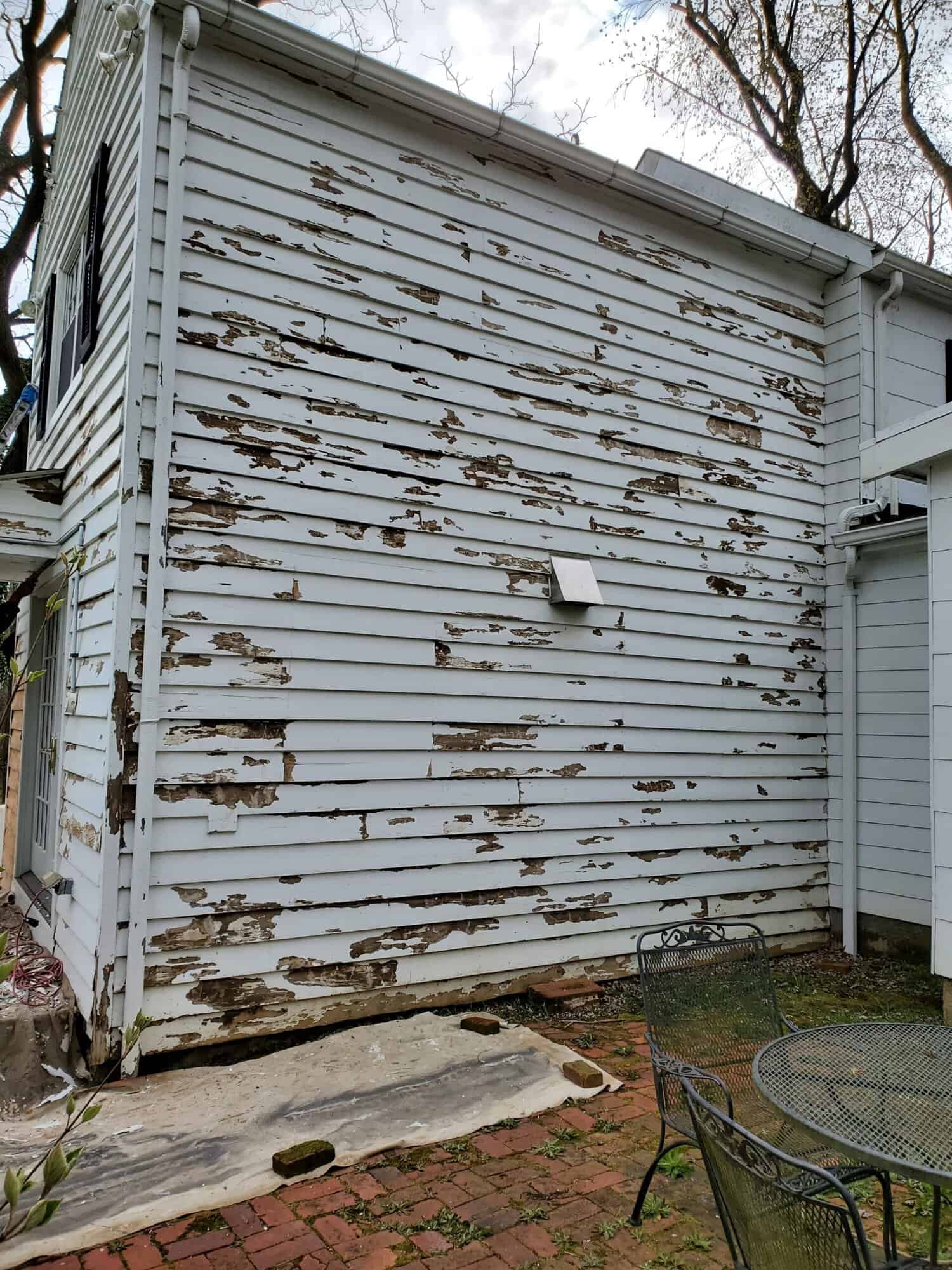Have you ever stepped back to admire your freshly painted walls only to notice unsightly blisters marring the surface? It’s a common but disheartening issue that many homeowners face, especially in places like Cockeysville, MD, where the climate can influence paint behavior. If you’re wondering what causes paint to blister and how to prevent it from happening in your home, you’re in the right place.
At FR Contractors and Investors, Inc., our house painting services are carefully crafted to address and prevent such frustrations. Interior house painting might seem straightforward, but it comes with its challenges, such as blistering, which affects the aesthetics of your walls and can indicate deeper issues.
In this blog, we’ll explore various factors that contribute to paint blistering, helping you understand and tackle this frustrating issue effectively.
What is Paint Blistering?
Ever noticed those pesky little bubbles popping up under the surface of your freshly painted wall? That’s what we call paint blistering. It’s when bubbles or blisters form beneath the paint film, causing it to lift away from the underlying surface. These blisters can vary in size and are often filled with air or moisture, which disrupts the smooth look of your paint project.
What causes paint to blister like this? It can happen on interior and exterior painted surfaces, resulting in an appearance that’s anything but polished and professional. Understanding paint blistering is important because it affects the beauty of your walls and can signal deeper issues with moisture or the paint application process. Whether you’re dealing with this in a cozy living room or the expansive exterior of a home, recognizing the signs and knowing what causes paint to blister are the first steps towards fixing and preventing this common painting challenge.
What Causes Paint to Blister?
When paint on your walls starts to form bubbles, it can be a real eyesore. This is known as paint blistering, and understanding the common reasons behind it is crucial for maintaining a pristine finish. Here, we’ll explore what causes paint to blister, helping you prevent this frustrating issue in your painting projects.
Moisture Issues
- Trapped Moisture: One of the leading causes of paint blistering is moisture trapped beneath the paint layer. This often happens if the surface isn’t properly dried before painting or if moisture seeps in through cracks or joints. Ensuring that the surface is completely dry before starting can help avoid this problem.
- High Humidity: Attempting to paint during conditions of high humidity can also lead to blistering. The moisture present in the air can get trapped between the layers of paint, particularly if the paint dries too rapidly on the surface, resulting in blisters.
Heat Exposure
- Direct Sunlight: Painting in direct sunlight or on surfaces that are too hot can cause the paint to dry too quickly. This rapid drying traps solvents beneath the surface, which then expand and form blisters as they try to escape.
- Improper Curing: If paint, especially oil-based types, doesn’t cure properly due to elevated temperatures, it can lead to blistering. Ensuring proper timing and conditions for the paint to cure can prevent this issue and help achieve a smooth, flawless finish.
Surface Contamination
- Dirty Surfaces: Ever tried painting over a dirty wall? If the surface is coated with dust, dirt, grease, or other contaminants, it can prevent the paint from adhering properly. This lack of adhesion is a key factor in what causes paint to blister, as the paint cannot firmly attach to the underlying surface.
- Residues from Previous Paint: If the previous layers of paint were not completely removed or properly prepared, they might interfere with the new paint’s ability to stick. This can lead to weak spots where blistering is more likely to occur, illustrating how crucial thorough preparation is to avoid what causes paint to blister.
Incompatible Paint Layers
- Latex over Oil-Based Paint: Applying latex paint directly over oil-based paint without the right preparation can create a recipe for disaster. This common mistake leads to poor adhesion and, inevitably, blistering. To avoid this, proper surface preparation and the right primer can make all the difference.
- Improper Priming: Skipping the primer or using the wrong type can set the stage for what causes paint to blister. A primer ensures that the topcoat adheres smoothly and durably, reducing the risk of problems like blistering.
Poor Application Techniques
- Over-Thinning the Paint: While it might seem like a good idea to extend your paint by adding extra thinner or solvent, doing so can weaken the paint film. This weakening is another answer to what causes paint to blister, as it makes the paint less capable of forming a solid, even coat.
- Too Thick Application: On the flip side, applying paint too thickly can also lead to trouble. Thick layers of paint may dry unevenly, trapping solvents beneath the surface. As these solvents eventually try to escape, they push up against the paint, forming blisters. Understanding the right balance in paint application is crucial to preventing what causes paint to blister and achieving a smooth, professional finish.
How to Prevent Paint Blistering
At FR Contractors and Investors, Inc., we understand the frustration of paint blistering. That’s why we take meticulous steps to prevent what causes paint to blister, ensuring a flawless finish that stands the test of time. Our commitment to excellence means taking the right precautions from the start, guaranteeing that your painting project remains pristine and beautiful.
1. Proper Surface Preparation
To prevent paint blistering, we start with thorough surface preparation. We make sure the surface is clean, dry, and free from any contaminants before a brush even touches it. We use appropriate cleaners for each specific surface type and allow ample time for the area to dry completely.
We also sand the surface to create the perfect texture for bonding and apply a suitable primer, especially important when switching between different types of paint. This careful preparation ensures a strong foundation that minimizes the risk of blistering.
2. Control Environmental Conditions
We control the painting environment meticulously. We avoid painting in high humidity or extreme temperatures, conditions known for causing paint to blister. We choose to paint in moderate temperatures and ensure that the surface and surrounding area are completely dry before starting. By managing these environmental factors, we prevent moisture from becoming trapped under the paint, eliminating a major cause of blistering.
3. Use Quality Materials
Using the right materials is important for preventing paint blistering. We select high-quality paints and primers that are suitable for the specific surface and environmental conditions of each project. We follow the manufacturer’s recommendations for thinning and application to the letter, ensuring optimal adhesion and durability.
4. Proper Application Techniques
We apply paint according to the best industry practices. We strictly adhere to the paint manufacturer’s instructions regarding application thickness, drying times, and the number of coats. We avoid over-thinning the paint, which can weaken the paint film and lead to blistering. By adhering to these guidelines, we ensure that the paint is applied evenly and cures properly, significantly reducing the risk of what causes paint to blister.
Final Thoughts
Understanding what causes paint to blister is essential in achieving a flawless finish for your home. Throughout our discussion, we’ve covered the common causes such as moisture issues, heat exposure, surface contamination, incompatible paint layers, and improper application techniques.
At FR Contractors and Investors, Inc., we take these insights into practice, providing top-tier interior and exterior house painting services throughout Sparks Glencoe, Roland Park, MD, and the surrounding areas. Our focus on detailed preparation, controlled application environments, and the use of high-quality materials helps ensure that blistering is prevented before it can even start
Call us at 443-775-2994 for a FREE estimate. Let’s make your home look its best, with enduring beauty and quality that stands the test of time!





